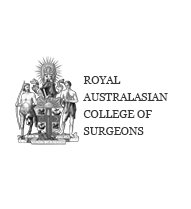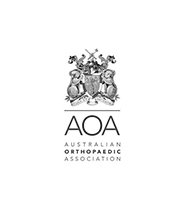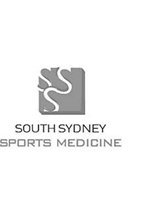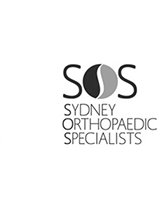Shoulder Separation
Acromioclavicular joint (AC joint) dislocation or shoulder separation is one of the most common injuries of the upper arm.
It involves separation of the AC joint and injury to the ligaments that support the joint. The AC joint forms where the clavicle (collarbone) meets the shoulder blade (acromion).
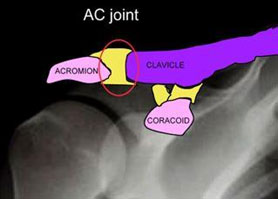
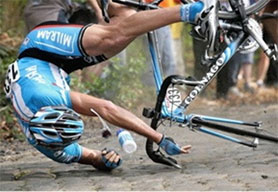
What are the causes of shoulder separation?
A shoulder separation commonly occurs in athletic young patients and results from a fall directly onto the point of the shoulder
A Type 1 shoulder separation occurs when there is an AC ligament sprain that does not displace the collarbone.
In a Type 2 injury, the AC ligament tears and the coracoclavicular (CC) ligament sprains or tears slightly causing misalignment in the collarbone.
In the Type 3-5 shoulder separation injuries, both the AC and CC ligaments are torn and the AC joint is not properly aligned..
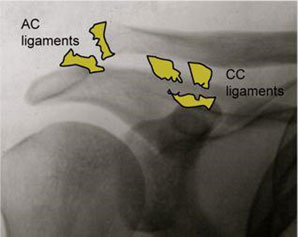
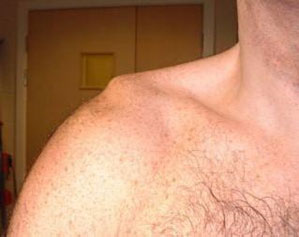
Symptoms of Shoulder Separation
Symptoms of a separated shoulder may include
- shoulder pain,
- bruising or swelling, and
- limited shoulder movement.
How is shoulder separation diagnosed?
The diagnosis of shoulder separation is made through a medical history, a physical exam, and an X-ray.
What are the treatment options?
Conservative treatment
Conservative treatment involves
- pain management: analgesics, ice, anti-inflammatory medication and sling immobilization
- restoration of movement and strength as pain settles
- return to normal activities, usually around 6-8 weeks depending on the degree of separation. Sleeping on the affected side may be uncomfortable for 1 year.
Surgical treatment of AC joint dislocations is reserved for a small percentage of cases that include:
- Type 5 dislocations. In addition to complete tearing of the AC and CC ligaments in type 5 dislocations the muscular attachments are also torn off around the AC joint. This leads to a greater separation of the shoulder blade and collarbone. The local scarring is not sufficient to provide long-term stability of the shoulder blade. Positioning of the shoulder blade requires chronic neck and back muscle activation that can lead to a low grade ache and fatigue pain at the end of the day.
- Type 4 & 6 dislocations are rare but result in a locked position of the end of the clavicle
- Type 3 dislocations in overhead manual workers and athletes
- Failed non-operative management
The surgical techniques for AC joint reconstruction are many and varied. In acute reconstructions (< 2 weeks post injury), if the original anatomy can be restored the native ligaments can scar to provide long-term stability. In delayed reconstructions, in addition to restoring anatomy, a biological ligament must be passed between the shoulder blade and collarbone to provide long-term stability.
My Preferred Procedure for:
- Acute reconstructions: is restoring anatomy using a plate and screw device (AO hookplate). The hook of the plate runs behind the AC joint and holds the shoulder blade up to the collarbone. The procedure requires an anaesthetic, takes about 1 hour and requires an overnight hospital stay. The pain after surgery needs to be controlled on oral medications before discharge. A sling is required until 4 weeks post surgery and range of motion is gradually restored. There may be residual shoulder pain with above shoulder activity that is generally cured by plate removal. The hookplate must be removed at 3 months post surgery. This requires another operation with the recovery limited to the 2 weeks of wound healing.
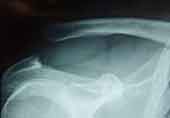
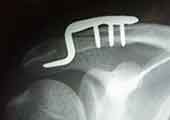
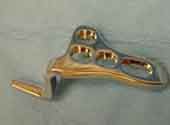
- Delayed reconstructions: uses a biological ligament (local or distant) and coraco-clavicular approximation with devices such as the hookplate or tightrope. These require sling immobilisation for six weeks. Restoration of movement and strength is slower than in acute reconstructions.
The operation specific risks include but are not limited to infection, local skin nerve damage, shoulder stiffness and failed ligament healing and loss of stabilisation. There is a risk of acromial fracture in hookplate reconstructions, if repeat injury occurred while the device remained in the body. If the hookplate is not removed around 3 months post insertion there can be bony erosion with time. There can be a slight loss of reduction of AC joint alignment with hookplate removal that does not seem to affect the long-term result.
Prognosis
With all types of AC joint separations, long-term problems with pain and loss of function can occur. With grade 1 and uncomplicated grade 3 separations, about 10% of people experience some long-term problems. Since there is more rubbing between the collarbone and shoulder blade with grade 2 separations, as many as 25% of people experience long-term problems such as pain or arthritis. After surgical repair there is a small long term risk of AC joint arthritis as the native joint cartilage is damaged in the traumatic separation. The vast majority of people are able to make a full recovery from a shoulder separation and return to the activity, work or sport of their choice.

